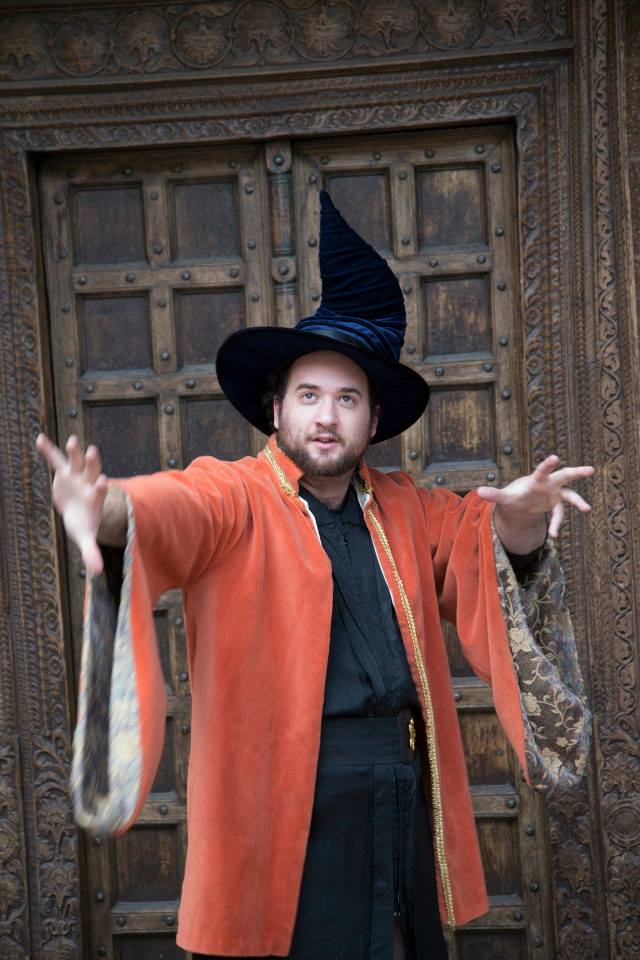OREM — The very title of The Magical Adventures of Merlin invites audience members to have expectations about the show. In an effort to live up to its title, technical director Nat Reed and magic coordinator Brian South provided levitating objects, some sleight-of-hand tricks, a magical bag, and even limited fireworks. As a piece of theatre for young audiences there is more than enough wizadry on the stage to keep the attention of the many young children in the audience.
The Magical Adventures of Merlin is a musical retelling of the story of King Arthur and the sword in the stone. With a script and score written by Janet Yates Vogt and Mark Friedman, the hour-long play is written for children up to 12 years old. However, Vogt and Friedman’s script will likely bore parents. The play is full of plot holes and stilted dialogue. It was never fully clear why, for example, Merlin and Arthur should be friends, or why Merlin would be tempted by Morgana’s offer. Moreover, the score was completely forgettable, and the only song that had any noteworthy music (“Merlin Is My Name”) had some atrociously amateur lyrics.
Compounding these problems was Jerry Elison‘s unimaginative directing. The knights (Zach Chilcote, Josh Hopkin, and Brad Longmore) vacillated between being stooge-like buffoons and evil henchmen. The result was an incoherent group that neither felt threatening or terribly funny. Elison also failed to establish a consistent acting style of the play. It was not unusual to have two or three completely different acting styles on the stage at the same time, such as Aaron James’s Blues Clues style (as Arthur), Justin Stockett‘s more realistic acting (as Merlin), and Paige Erickson expansively broad style (as Nimue). Finally, I had problems with the aimless blocking and the lack of eye contact between performers in many of the scenes, such as Merlin and Arthur’s first forest scene.
Despite the shortcomings in the script and directing, there are some bright spots in the show. The set (designed by Shawn Mortensen) encouraged scenes to flow together smoothly because no large pieces had to be pushed into the wings. Moreover, it encouraged audience members to use their imagination to complete the location, such as the forest or Morgana’s lair. The set also blended beautifully with Seth Mergist’s lighting design, which added an eerie feeling to the opening scene and enhanced the magical moments throughout the play (especially the climax).
I also appreciated the performances of some of the cast members, especially Justin Stockett as Merlin. In his first scene, Stockett created a character with whom children can relate to; Merlin is not immediately good at tasks he tries, is burdened with chores, and wishes that things in his life were different. In short, Merlin feels the way a lot of children feel on a rough day. Stockett’s strong decision to make Merlin childlike (without seeming foolish) is probably the show’s most successful aspect. Tiffany Raines was another bright spot in the cast. Her performance as Morgana reminded me vaguely of Ursula from The Little Mermaid because of the way Morgana slinked around the stage and devised her evil plan. The character was a reasonable and child-appropriate villain.
Being a production aimed at elementary school audiences, it really doesn’t matter what an adult theatre critic thinks. What matters is how the intended audience received the show. Judging by the frequent high-pitched laughter during the play and the excited chatter in the lobby afterwards, The Magical Adventures of Merlin was a success among the child and tween crowd. I wouldn’t hesitate to return with one of my young nieces or nephews to the show. Plus, the play is just under an hour long and cheaper than a movie. And thanks to the technical wizadry, stage magic, and fantastical setting, The Magical Adventures of Merlin will fire the imaginations of many children in Utah County this month.







